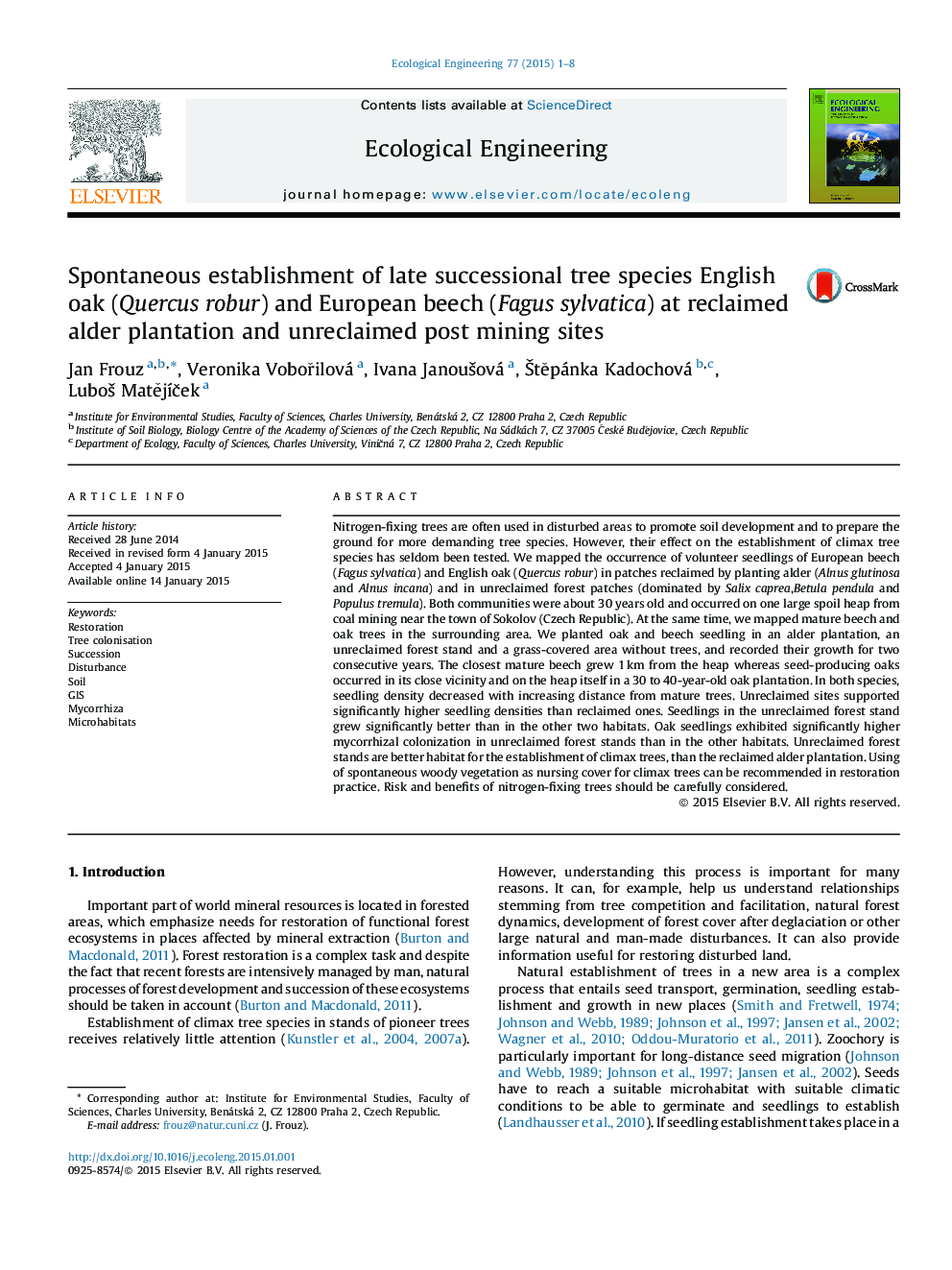| Article ID | Journal | Published Year | Pages | File Type |
|---|---|---|---|---|
| 4389241 | Ecological Engineering | 2015 | 8 Pages |
Nitrogen-fixing trees are often used in disturbed areas to promote soil development and to prepare the ground for more demanding tree species. However, their effect on the establishment of climax tree species has seldom been tested. We mapped the occurrence of volunteer seedlings of European beech (Fagus sylvatica) and English oak (Quercus robur) in patches reclaimed by planting alder (Alnus glutinosa and Alnus incana) and in unreclaimed forest patches (dominated by Salix caprea, Betula pendula and Populus tremula). Both communities were about 30 years old and occurred on one large spoil heap from coal mining near the town of Sokolov (Czech Republic). At the same time, we mapped mature beech and oak trees in the surrounding area. We planted oak and beеch seedling in an alder plantation, an unreclaimed forest stand and a grass-covered area without trees, and recorded their growth for two consecutive years. The closest mature beech grew 1 km from the heap whereas seed-producing oaks occurred in its close vicinity and on the heap itself in a 30 to 40-year-old oak plantation. In both species, seedling density decreased with increasing distance from mature trees. Unreclaimed sites supported significantly higher seedling densities than reclaimed ones. Seedlings in the unreclaimed forest stand grew significantly better than in the other two habitats. Oak seedlings exhibited significantly higher mycorrhizal colonization in unreclaimed forest stands than in the other habitats. Unreclaimed forest stands are better habitat for the establishment of climax trees, than the reclaimed alder plantation. Using of spontaneous woody vegetation as nursing cover for climax trees can be recommended in restoration practice. Risk and benefits of nitrogen-fixing trees should be carefully considered.
